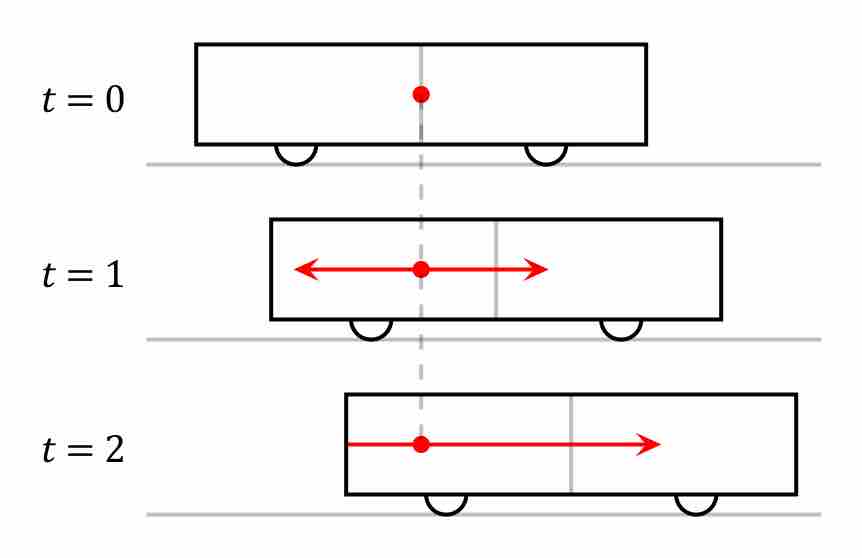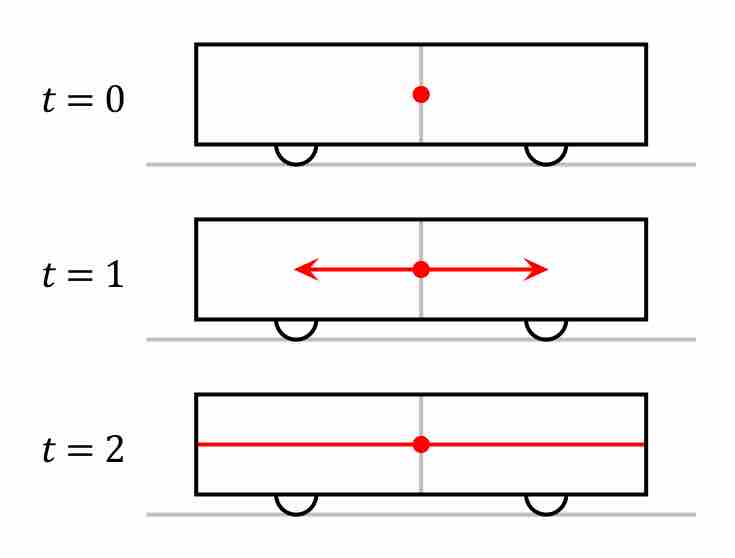The relativity of simultaneity is the concept that simultaneity–whether two events occur at the same time–is not absolute, but depends on the observer's frame of reference.
According to the theory of special relativity, it is impossible to say in an absolute sense whether two distinct events occur at the same time if those events are separated in space, such as a car crash in London and another in New York. The question of whether the events are simultaneous is relative: in some reference frames the two accidents may happen at the same time, in other frames (in a different state of motion relative to the events) the crash in London may occur first, and still in other frames, the New York crash may occur first. If the two events are causally connected ("event A causes event B"), then the relativity of simultaneity preserves the causal order (i.e. "event A causes event B" in all frames of reference).
If we imagine one reference frame assigns precisely the same time to two events that are at different points in space, a reference frame that is moving relative to the first will generally assign different times to the two events. This is illustrated in the ladder paradox, a thought experiment which uses the example of a ladder moving at high speed through a garage.
A mathematical form of the relativity of simultaneity ("local time") was introduced by Hendrik Lorentz in 1892, and physically interpreted (to first order in v/c) as the result of a synchronization using light signals by Henri Poincaré in 1900. However, both Lorentz and Poincaré based their conceptions on the aether as a preferred but undetectable frame of reference, and continued to distinguish between "true time" (in the aether) and "apparent" times for moving observers.
In 1905, Albert Einstein abandoned the (classical) aether and emphasized the significance of relativity of simultaneity to our understanding of space and time. He deduced the failure of absolute simultaneity from two stated assumptions: 1) the principle of relativity–the equivalence of inertial frames, such that the laws of physics apply equally in all inertial coordinate systems; 2) the constancy of the speed of light detected in empty space, independent of the relative motion of its source.

Observer Standing on the Platform
Reference frame of an observer standing on the platform (length contraction not depicted).

Observer Onboard the Train
The train-and-platform experiment from the reference frame of an observer onboard the train.